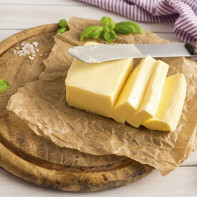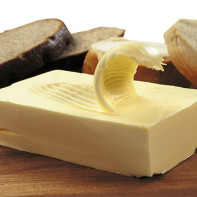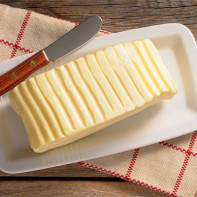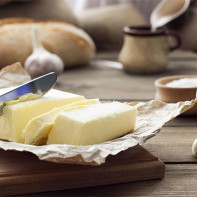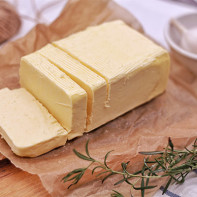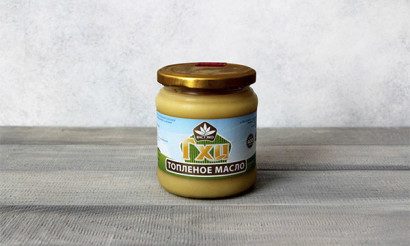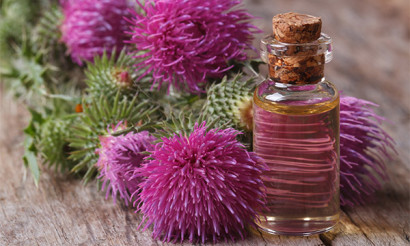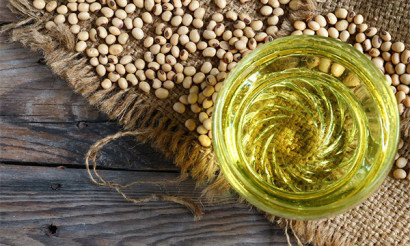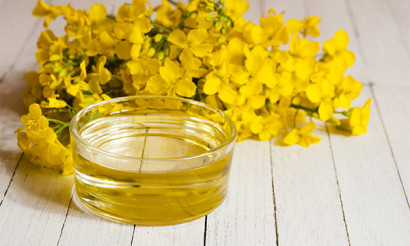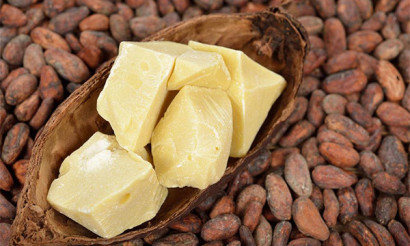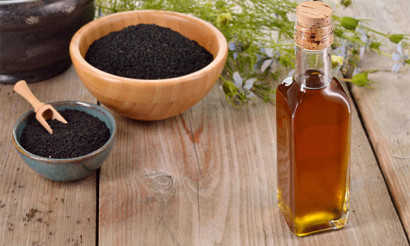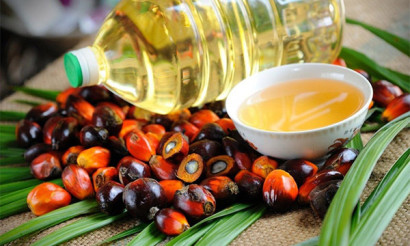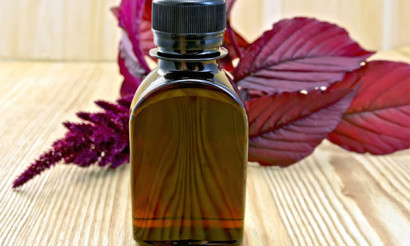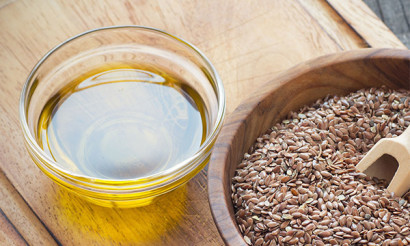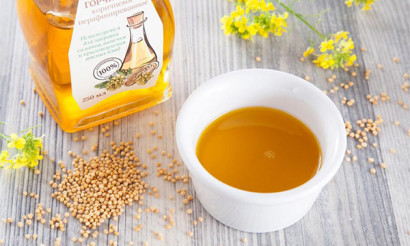Butter: useful properties and contraindications
Butter is a food product that is produced in factories and made at home from milk. Butter is one of the most concentrated forms of liquid milk. It takes about 20 liters of whole milk to produce one kilogram of butter.
- Types of butter
- What is the difference between margarine and butter
- Composition and calories
- How much butter can you eat per day
- What is the usefulness of butter
- General benefits
- For Women
- For Men
- If Pregnant
- Breastfeeding
- Butter for Kids
- Can I eat butter when losing weight
- Butter in Medicine
- Diabetes Mellitus
- For pancreatitis
- Gastritis
- When constipation
- At gout
- For colitis
- For hemorrhoids
- Pri cholecystitis
- Recipes of folk medicine based on butter
- Butter in cosmetology
- Skin Care
- Hair Benefits
- Harm and Contraindications
- How to choose and where to store butter
- How to Check the Butter for Naturalness
- Why does butter crumble when sliced?
- Can I fry on butter?
- What can replace butter?
- How to Make Butter at Home
- How to Melt Butter
- On the Stove
- On the Microwave
- Interesting Facts about Butter
There are 2 ways to make butter:
- Butter production can be based on whipping cream, which has a medium fat content (about 35-38%), the process itself is carried out in special butter makers.
- Production is based on converting high-fat cream (with a fat content of about 82.5-83%) into butter.
Types of butter
- Unsalted (fat - 82.5%, moisture - 16%).
- Salted (fat - 81.5%, moisture - 16%, table salt - 1%).
- Vologda (82.5% fat, 16% moisture).
- Amateur (fat - 78%, moisture - 20%, table salt - 1%).
- Filled with additives (chocolate, fruit and so on).
What is the difference between margarine and butter?
Butter is a fully dairy product, obtained by whipping milk. It contains 15-20% water and 80-85% fat. Today you can find different types of butter on sale: low-calorie, with salt, without salt, etc. Of course, manufacturers often cheat, because in order to reduce production costs they add various flavorings and colorings to the oil, so in some cases such a product can hardly even be called oil. Natural product is a source of lipids, fat-soluble vitamins A and D, as well as cholesterol.
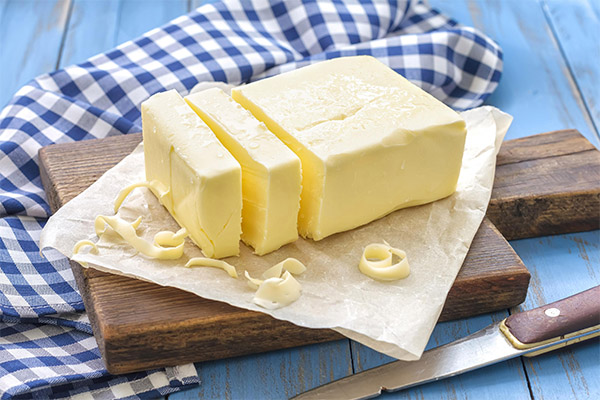
Margarine is an inexpensive alternative to butter. It consists of vegetable and animal fats which undergo industrial processing - hydrogenation and transesterification. Hydrogenation makes the fat more saturated, while trans fats can be formed, which have a negative impact on the human body. Recently, many manufacturers have begun to consider the negative impact of trans fats on human health and therefore produce non-hydrogenated margarine. Instead of hydrogenating liquid vegetable oils, small amounts of palm oil are added, making margarine softer and less fatty. Margarine is a source of vitamins A and E, fiber or phytosterols.
Composition and calories
100 g of butter contains:
- protein - 0.7 g;
- fats - 82 g;
- Carbohydrates - 0.8 g.
Caloric value of 745 kcal per 100 g of the product. Butter consists of 1-2% milk, 16-20% water, 80-82% milk fat. It also contains calcium, phosphorus, vitamins A, D and E. Lactones, diacetyl, methyl ketones, dimethyl sulfide and fatty acids are ingredients that add flavor to the butter.
How much butter can be eaten per day
Butter is an easily digestible product and contains no harmful chemical components (if it is of good quality). However, the saturated fatty acids in butter, which are also present in fish, cheese, yogurt, meat, and sausage products, can negatively affect the body. Therefore, it is worth limiting your health to eating a maximum of 3 teaspoons of butter per day.
How Butter is Useful
General benefits
- Anti-cancer properties. Eating butter can help reduce the risk of certain cancers, particularly colon cancer, because it helps healthy cells develop. This product also affects the proper functioning of the colon and facilitates the treatment of inflammatory diseases of this organ.
- It reduces inflammation. The oil is known to contain conjugated linoleic acids that help reduce inflammation in the body.
- Affects your mood. The acids that butter is rich in affect the function of histone deacetylase and are strong mood stabilizers. It is recommended to regularly consume butter for people who suffer from depression and mood swings.
- Benefits to the eyes. Butter contains beta-carotene. This is a nutrient that is essential for healthy vision and also protects the eyes. Beta-carotene reduces the risk of angina and retinal yellow spot degeneration.
- Bone benefits. The oil contains calcium and other minerals such as copper, zinc, selenium and manganese. They are important elements in building and maintaining bone strength, as well as helping bones regenerate. Insufficient intake of minerals found in butter can cause premature bone aging and increase the risk of arthritis and osteoporosis.
- Provides vital vitamins. The thyroid gland is the main endocrine gland and is also an important link in the absorption of vitamin A. People with thyroid disease tend to have low levels of vitamin A in their bodies. Butter can provide the body with vitamin A, so regular consumption of this product can help alleviate thyroid problems.
- It reduces the risk of cardiovascular disease. Butter when consumed regularly in moderate amounts is a healthy food for maintaining normal heart function. This product contains high amounts of good cholesterol. The omega-3 fatty acids in butter help reduce the risk of cardiovascular disease.
- A source of fat-soluble vitamins. Because the body needs vitamins to function properly, people need to consume fats to absorb them. Butter is not only a natural source of vitamins A, D, K and E, but also the best source of them. These vitamins are fat-soluble, so consuming them through butter is the easiest way for the body to absorb them.
- It helps prevent tooth decay. Vitamin K2, found in butter, plays a vital role in preventing tooth decay. The human body produces vitamin K2 from K1, but in very small amounts (about 1/10th of the required amount). The best way to get vitamin K2 is to eat butter.
- Strengthens the immune system. Saturated fats have antimicrobial, anticancer and immune system strengthening properties. Lauric acid helps get rid of various viruses, bacterial and fungal infections.
- It helps maintain the health of the gastrointestinal tract. The oil contains glycosfingolipids, a type of fat that protects the body from gastrointestinal infections, which tend to occur in children and the elderly. Also, the human body needs good cholesterol to support the cells in the intestines so that the digestive system can do its job properly.
For Women
Butter has properties that have a positive effect on the female hormonal system. The production of female sex hormones requires a supply of fatty acids in the body. In order for the female reproductive system to function properly, cholesterol levels in the body must be maintained, otherwise hormonal disorders can occur.
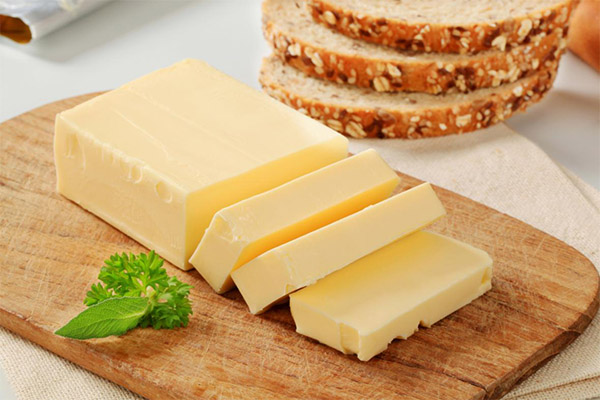
For men
The oil also affects men's health. Consumption of a sufficient amount of butter has a positive effect on male reproductive function and sexual activity.
When pregnant
Pregnant women can consume butter. However, if the expectant mother has any allergy to dairy products, it is best to give it up at the stage of pregnancy.
The benefits derived from consuming butter during pregnancy:
- Healthy Bones. Butter contains calcium, which contributes to the healthy development of the baby's teeth as well as bones.
- Reduces stress. It is highly discouraged for pregnant women to be nervous, as it affects the baby. The oil contains flavonoids, and eating it helps minimize stress levels.
- Brain development. The vitamin E found in butter helps the development of the baby's brain.
- Appearance. Pregnancy is accompanied by many hormonal and physical changes that can make a woman less attractive. The oil is enriched with antioxidants, which can help in the regeneration of skin cells, making a woman younger.
- Hormonal problems. Butter is also recommended to consume during hormonal malfunctions, because the substances in it help in the treatment of such problems (but you should consult your doctor before using it).
- Supports cholesterol levels. The oil contains short and medium chain fatty acids, which help regulate cholesterol levels in the expectant mother.
When breastfeeding.
Butter is considered an important product for normal growth, child development and recovery of the woman's body after childbirth. Consumption of butter should be in moderation, otherwise it can lead to impaired body functions, as well as affect body weight. It is necessary to adhere to acceptable doses and rules of consumption. The recommended dose of butter during breastfeeding is from 10 to 30 grams per day.
Butter for children
What is the use of butter for children:
- Nutrients. Butter is a source of fat-soluble vitamins such as A, D, E and K. Fats are essential for the absorption of nutrients, especially water-soluble vitamins. Without fat, your child cannot get the benefits of the foods he or she eats.
- Source of minerals. Butter contains vital minerals such as manganese, zinc, copper, selenium and chromium. The minerals serve as an effective antioxidant and protect your baby from harmful infections. The lauric acid present in the oil helps the baby fight fungal infections and candida.
- It improves digestion. The oil contains glycosfingolipids, substances that help the child's body to fight intestinal infections, thereby aiding digestion.
- It helps in brain development. The oil contains omega-3 and omega-6 fatty acids. Omega-3 fatty acids promote brain development. When your child grows up, he or she will need regular supplies of these fatty acids.
- Strengthens the immune system. The oil is an excellent source of antioxidants that help resist the attack of free radicals produced by the body during metabolism. This product also contains resveratrol, a substance that has serious disease-fighting potential. It helps prevent tissue and DNA damage and also slows down aging.
Can you eat butter while losing weight?
Contrary to popular belief that butter is bad for people trying to lose weight, experts say it is not. The fatty acids in butter are absorbed by the liver and processed into energy. Butter also contains the mineral iodine, which is very easily absorbed by the body. Everyone needs iodine for the proper functioning of the thyroid gland, which produces hormones that regulate metabolism. Since the body does not produce iodine, it must be obtained with food. The body becomes satiated by getting the nutrients in the oil. This reduces a person's cravings for other foods that do not contain nutrients.
Butter in Medicine
Butter has quite a wide range of uses in the medical field. It can be used to treat coughs, diarrhea and constipation.

In the case of diabetes.
There is an opinion that the use of butter for diabetes is acceptable and may even be beneficial. Such statements are unfounded, since the effect of butter on the body of people with diabetes has not been fully investigated to date. Despite the fact that it does not directly affect blood glucose levels, this product is not recommended for use by diabetics. One of the main reasons is its cholesterol content.
Important: The glycemic index of butter is 51 units.
For pancreatitis.
Saturated and trans fats, which are contained in butter and margarine, should be consumed very rarely and only in very small amounts, because the body of a person suffering from pancreatitis is not able to properly digest food, especially fatty food. Most people with chronic pancreatitis may experience pain in the upper abdomen or in the back area when consuming butter.
With gastritis
If you have gastritis with hyperacidity, it is not recommended to eat butter. If the acidity is reduced, the consumption of butter is allowed, as it leads to its increase. The main thing is to observe moderation.
For constipation
Butter has laxative properties. Most likely, immediately after eating a person will not feel the urge to go to the toilet, but with regular long-term use, constipation will gradually pass.
With gout
With gout, dairy products are allowed to eat, but unlike other dairy products, the amount of consumption of butter should be moderated.
In colitis
In this disease, it is forbidden to eat foods that contain trans fats. Butter is on the list of these products. It is worth noting that in some cases of colitis, 40-50 grams (no more) of butter per day is allowed.
When hemorrhoids
In this disease, it is necessary to regularly consume butter, because it helps to get rid of constipation and hemorrhoids. Butter can have a beneficial effect on the body: it alleviates the symptoms of hemorrhoids, reduces inflammation and may even reduce pain during defecation. Ointments and oil suppositories can have anti-inflammatory effects, relieve pain, itching swelling of hemorrhoidal nodes and heal wounds.
For cholecystitis.
Butter can be consumed with cholecystitis, as it is easily digested and absorbed. In case it causes pain or bitterness in the mouth, it is recommended to add it a little at a time to different dishes as an ingredient.
Recipes of folk medicine based on butter
Since ancient times, our ancestors actively used oil in folk medicine, as a nourishing as well as softening component in various ointments, serums, lotions and other medicines. To date, folk medicine has not lost its relevance due to its availability to everyone and the effectiveness of its effects. Therefore, here are a few recipes for useful remedies based on butter.
- If you are suffering from a dry cough or a cold, then butter will help you to cope with this illness. Add to a glass of warm milk about 30 grams of butter. Additionally it is recommended to add to the drink a teaspoon of honey. Such a remedy will help strengthen the immune system and alleviate coughs.
- Another folk remedy to improve immunity, which is especially effective during the cold season. To 50 ml of aloe juice add 100 grams of cranberry pulp, and 150 grams of honey and walnuts. The final and main component is 150 grams of oil. The resulting mixture should be stored in the refrigerator and used 1-2 teaspoons after each meal.
- An effective remedy for getting rid of warts on the basis of butter. To a raw egg (together with the shell), add 2 teaspoons of vinegar and 100 milliliters of butter (pre-melted in a water bath or in the microwave). The next thing you need to do is to leave the resulting ointment in a dark, cold place for three days. So you get an excellent remedy, which quickly, and most importantly effectively fights spurs and warts.
Butter in cosmetology
Butter is a product that helps to effectively fight dry skin, wrinkles, as well as a beneficial effect on the hair.
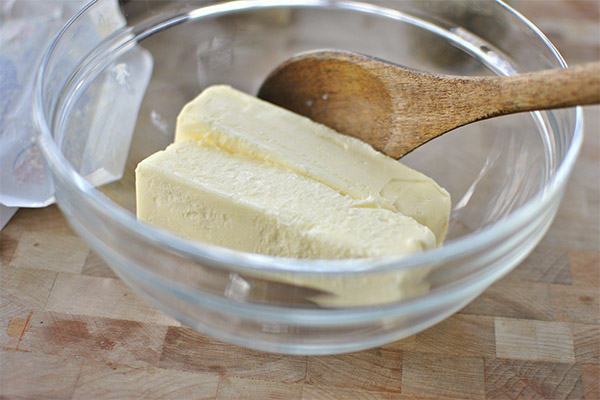
Benefits for the facial skin
Butter can be used as a moisturizer for dry skin. Rubbing with butter can help reduce wrinkles, stretch marks and scars, and the product can speed up healing.
This product helps soothe skin irritations and helps with lesions and rashes. Rubbing cold oil on the area under the eyes will help relieve eye strain and provide eye relaxation.
Benefits for the hair
The acids in the oil can have a positive effect on the hair. Butter can provide silky and supple hair. This product is also a remedy that prevents brittle, dull, stiff curls. There are many recipes for homemade masks that are suitable for both oily and dry hair.
Health Hazards and Contraindications
Although butter is considered a very useful product, it has contraindications. It should not be used by people
- people with allergies;
- People who are intolerant to dairy products;
- people with high cholesterol levels in the body;
- People with heart or vascular disease;
- obesity;
- with a tendency to develop a rash.
It is worth noting that only natural butter has beneficial properties, and only if consumed in appropriate quantities. Because of the high level of cholesterol, inordinate consumption of butter can lead to atherosclerosis. People with heart diseases and high blood pressure should limit the use of butter or even refrain from it completely.
How to choose and where to store butter
How to choose
- It should say "butter" on the package.
- To the touch it should have a dense texture, but be quite pliable.
- It should have a characteristic homogeneous color.
- In the store you can check the quality of the butter by simply pressing on the package: if it crumples when pressed lightly, it is probably margarine or just a low-quality product.
- You can also smell it: flavorings are not capable of transmitting the smell of real butter.
- Look at the price: a quality product can not be cheap.
How to store
- The recommended storage temperature is from -0 to +6 degrees Celsius.
- Butter is recommended to be stored in the refrigerator.
- You can keep it in store packaging, if it is opaque.
- It is acceptable to store butter in a butter jar or in a plastic container (opaque).
- You can also wrap the butter in foil or parchment paper.
How to Check Butter for Naturality
The cost of natural butter is quite high, so unscrupulous manufacturers resort to ways that reduce costs without much concern for the quality of the product. Here's what you should do to check the butter for naturalness:

- Study the information on the package. The fat content should be more than 60%. If palm or peanut butter is listed in the composition, the naturalness of the product is in question. The longer the shelf life, the more likely the product contains preservatives.
- Check the stability of the mold. You need to leave a small piece of butter on a saucer for 60 minutes (at room temperature). The butter will soften a little, but the shape should remain in place.
- In a frying pan. Quality butter melts evenly when it hits the hot pan, and should be free of water and foamy.
- Determine by appearance and taste. Natural butter is usually quite solid, it should not split when cut, it should be white or yellowish in color, and it should not smell. The butter should melt when it comes into your mouth.
Why butter crumbles when sliced
Sometimes butter crumbles when sliced. This occurs for two reasons:
- Improper storage conditions. This can occur if the butter has been frozen and defrosted several times, as this causes its structure to break down.
- Quality. When the ratio of moisture to fat content in the butter is not met, it can crumble.
Can you fry in butter?
You can fry in butter, but it is worth knowing that after melting "harmful" cholesterol is formed. It can cause the appearance of cholesterol plaques, which leads to atherosclerosis and cardiovascular pathologies. Even short-term heating of the oil reduces its biological value.
What you can do to replace butter
When it comes to baking, a good substitute for butter is vegetable oil, spread, margarine, sour cream, heavy cream or yogurt. If you need an ingredient for a sandwich, butter can be substituted for cheese (soft), cottage cheese, yogurt or sour cream. Vegetarians tend to replace it with fruit puree. The dish will have a slightly different taste, but it will still be delicious and will not spoil the look.
How to make butter at home
To make butter, you will need natural cow's milk (at least 6 liters).
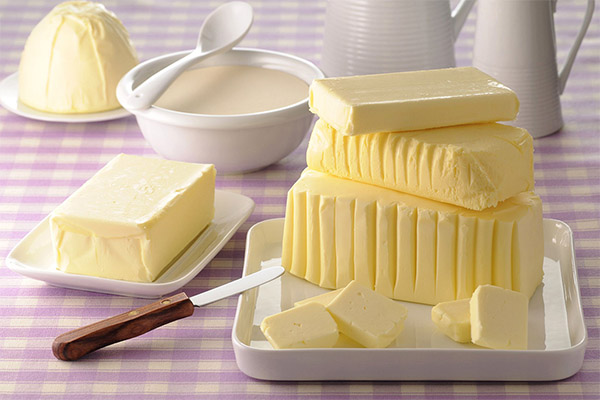
How to make it
- The first thing to do is to get the cream from the milk. To do this, place the milk (in jars) in a warm room. After 1-2 days, the milk will divide into cream and kefir. You will need only cream to make butter.
- Next you need to collect the cream in a separate jar. 1 liter of milk will give about 80-100 ml of heavy cream (so you need to take about 6 liters of milk). The cream must be chilled. To do this, place the jar in the refrigerator for 12-17 hours.
- Thick cream should be transferred to a dry deep bowl.
- Next, start whipping the cream until clots appear (using a mixer with special whiskers).
- At the moment when the mass begins to poorly whip, you should switch to a wooden pusher. Stir in a counterclockwise direction for about 1-3 minutes.
- After the formation of liquid, it should be poured into another container.
- Spoon the resulting butter into freezer bags.
- After the bag with the butter is tied, you need to shape the butter. It is recommended to make the form flattened, so it is convenient to put pieces on top of each other.
- Transfer the finished butter to the refrigerator for freezing.
How to Melt Butter
Butter stays solid when cooled, softens at room temperature, and melts when heated.
Butter can be melted by using the stove or the microwave.
On the stove
- Cut the butter into small pieces;
- put it in a saucepan or in a water bath;
- heat over low heat;
- wait until a third of the butter has melted;
- remove from the fire and stir.
In a microwave oven.
- Cut the butter into small pieces;
- Cover the dish with a paper towel with butter;
- Heat the butter for 10-12 seconds at low power;
- Stir and check the progress;
- repeat the procedure until all the butter is melted;
- at the end you need to stir it to melt the remaining chunks.
Interesting facts about butter
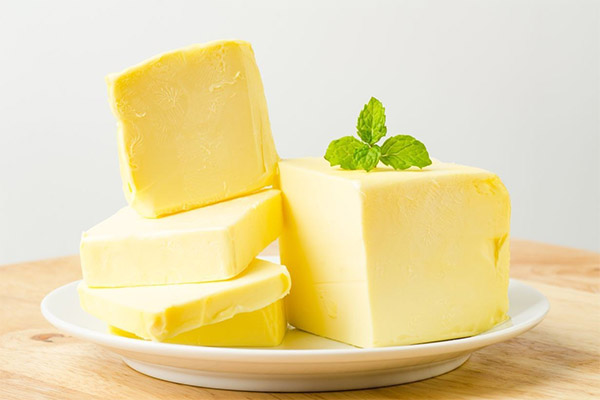
- The ancient Greeks and Romans considered butter to be the food of the northern barbarians.
- Some time ago, butter was considered unhealthy, mainly because of its high saturated fat content. Nevertheless, public and scientific opinion is gradually shifting in favor of the use of oil.
- In Ireland, one of the most common archaeological finds is oil drums buried in swamps. Apparently people did this to keep oil from being stolen.
- In ancient times, oil was used as fuel for lamps.
«Important: all information on this site is provided for informational purposes only Important: All information on this web site is provided for educational purposes only. Please consult with a health care professional before following any recommendations. specialist before applying any recommendations. Neither the editors nor the authors shall be liable for any possible harm caused by materials."

